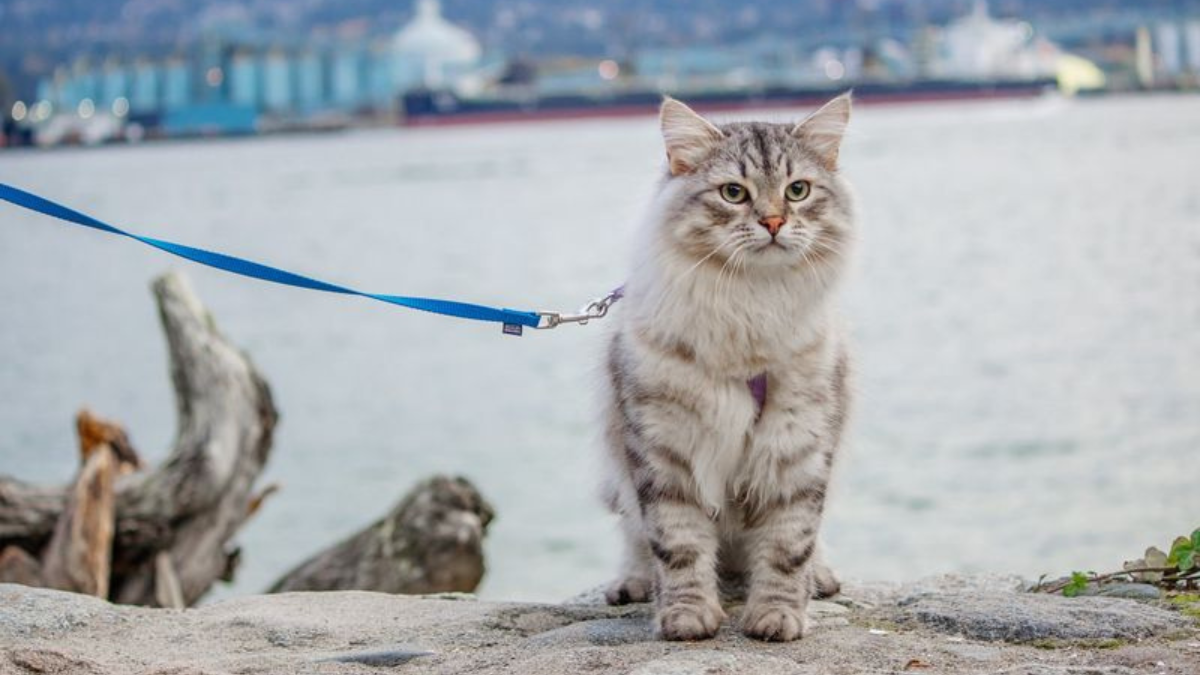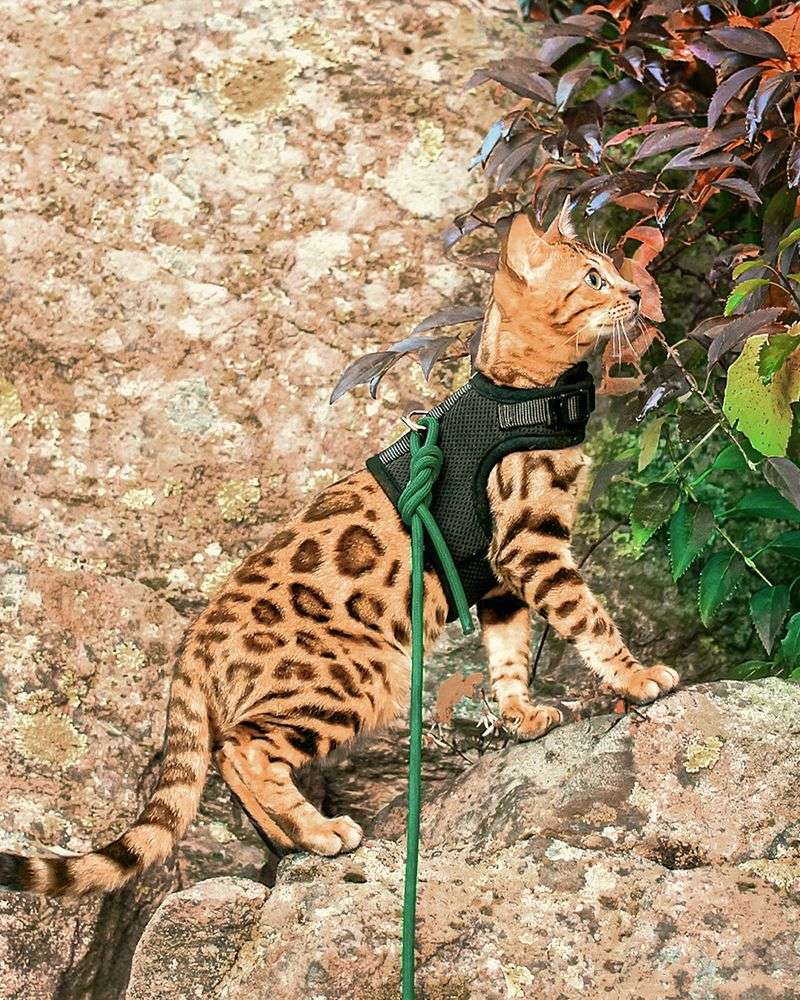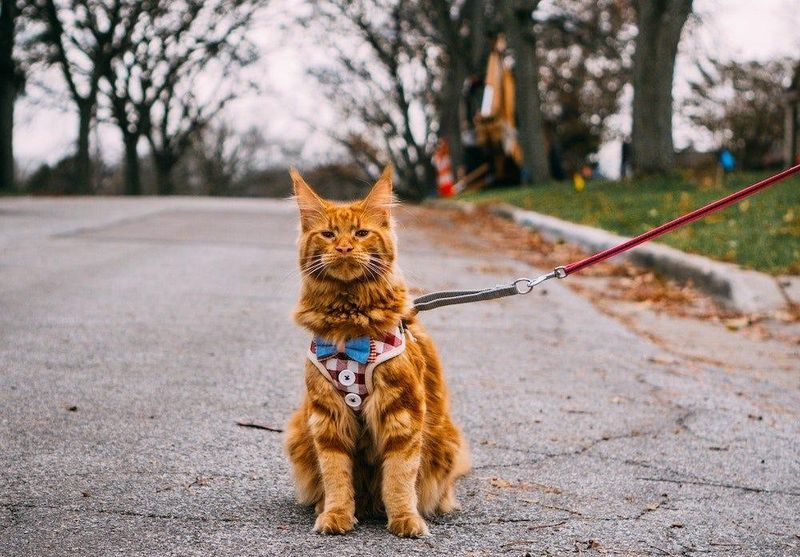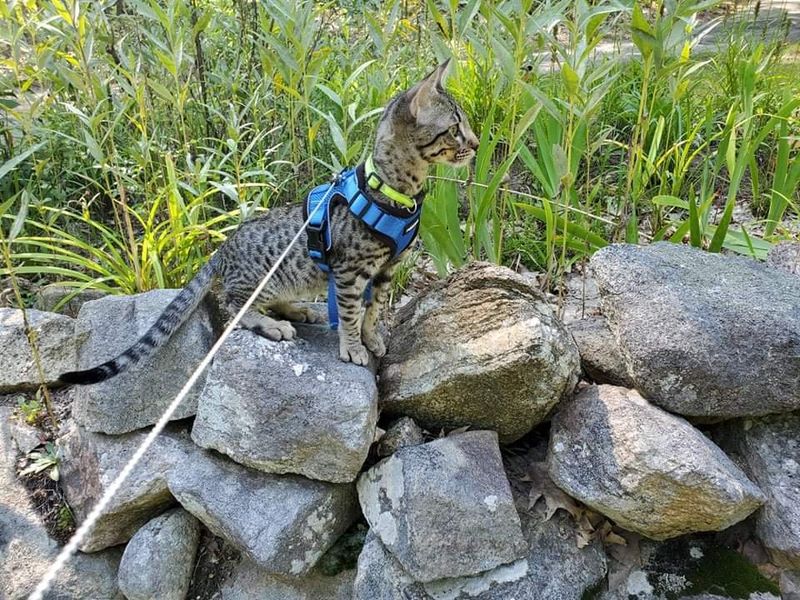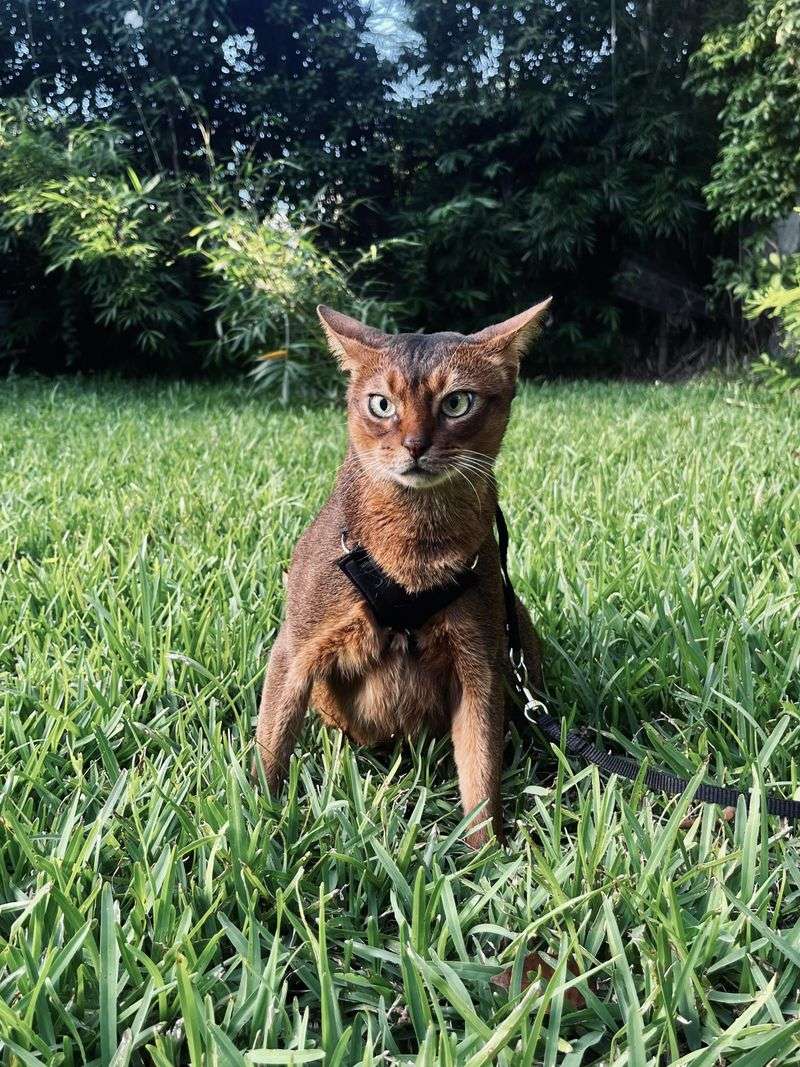📖 Table of Content:
Leash walking is no longer an activity reserved only for dogs. More cats are exploring the outdoors safely, protected from traffic, predators, and unfamiliar territory. With the right approach, many felines can enjoy these adventures while staying secure.
However, not every cat takes to a harness and leash with ease. Some breeds are more receptive to training and adapt quickly to wearing a harness. Their curious, confident nature makes them more likely to follow along on outdoor walks.
These adaptable breeds often enjoy exploring new environments while staying close to their human companion. Their temperament plays a key role in how smoothly the training process goes. For families considering leash walking, choosing the right breed can make all the difference.
1. Bengal
Bengals bring wild-looking spots and boundless energy to the leash training game. Their athletic build and curious nature make them natural explorers who often enjoy supervised outdoor activities.
Most Bengals adapt quickly to harness training due to their intelligence and desire for stimulation. Start with short indoor sessions before venturing outside. Their playful personality means they’ll likely see leash walks as an exciting game rather than a chore.
Bengals need plenty of exercise to stay happy, making leash walks an ideal outlet for their abundant energy.
2. Maine Coon
Gentle giants of the cat world, Maine Coons frequently take to leash training with their easygoing temperament. Despite their large size, these cats move gracefully and adjust well to new experiences when introduced properly.
Their intelligence allows them to understand the concept of walking with you rather than pulling ahead. Maine Coons bond strongly with their families and often enjoy sharing activities with their humans.
The sociable nature of these fluffy companions makes them less likely to panic in new environments, a crucial trait for successful leash adventures.
3. Savannah
Born from crossing domestic cats with servals, Savannahs inherit a love for exploration that makes leash training almost intuitive. Their tall, lean bodies and remarkable jumping ability require secure harnesses designed specifically for their unique build.
Savannahs form strong bonds with their owners and often follow them naturally, even without a leash. This loyal behavior translates well to structured walks. Their high energy levels benefit greatly from the mental and physical stimulation that outdoor adventures provide.
Always use a secure, escape-proof harness as these clever cats can be escape artists.
4. Abyssinian
Lively and inquisitive, Abyssinians approach new experiences with enthusiasm rather than fear. Their natural curiosity makes them ideal candidates for leash adventures where they can safely explore new sights and smells.
Training typically progresses quickly with these intelligent felines who learn commands and routines faster than many other breeds. Abyssinians develop strong bonds with their people and enjoy participating in activities together.
Their athletic build and moderate size make them easy to manage on a leash, while their short coat requires minimal grooming after outdoor excursions – a practical bonus for adventure-loving cat owners.
5. Ragdoll
Ragdolls earned their name from their tendency to relax completely when held, a trait that extends to leash training. Their calm demeanor helps them adapt to wearing a harness without the stress some cats experience.
Patience characterizes these gentle felines, making the adjustment period shorter than with more high-strung breeds. Ragdolls typically enjoy moderate activity levels, making leisurely strolls perfect for their temperament.
Their large size requires properly fitted harnesses, but their easy-going nature compensates by making them less likely to squirm out of gear or panic during walks.
6. Siamese
Talkative and social, Siamese cats often take to leash training with surprising enthusiasm. Their vocal nature means they’ll likely let you know exactly how they feel about the experience – typically with curious excitement!
Siamese form deep bonds with their humans and enjoy participating in activities together. Their sleek bodies and moderate size make fitting harnesses relatively straightforward compared to fluffier breeds.
Mental stimulation ranks high on Siamese priority lists, making outdoor walks an excellent way to satisfy their intelligent minds and prevent boredom behaviors that can develop when these smart cats lack adequate enrichment.
7. Burmese
Burmese cats pack tremendous personality into medium-sized, muscular bodies. Their people-oriented nature makes them receptive to training of all kinds, including leash walking.
Confident by nature, Burmese typically approach new experiences with curiosity rather than fear. Their athletic abilities are matched by their intelligence, creating a cat that quickly grasps the concept of walking alongside you.
Burmese form exceptionally strong bonds with their humans and often prefer being involved in daily activities rather than watching from afar – making leash walks a natural extension of your relationship.
8. Siberian
With a mix of curiosity and calmness, Siberians adapt well to leash training. Their athletic build makes exploring outdoor environments feel natural once the harness becomes familiar.
Patience marks their personality, allowing them to adapt to new routines without excessive stress. Siberians develop strong bonds with their families and often enjoy shared activities, making leash walks a potential bonding experience.
Their triple coat protects them in various weather conditions, though summer walks should be planned for cooler hours. Despite their fluffy appearance, these cats are surprisingly agile and coordinated on leash.
